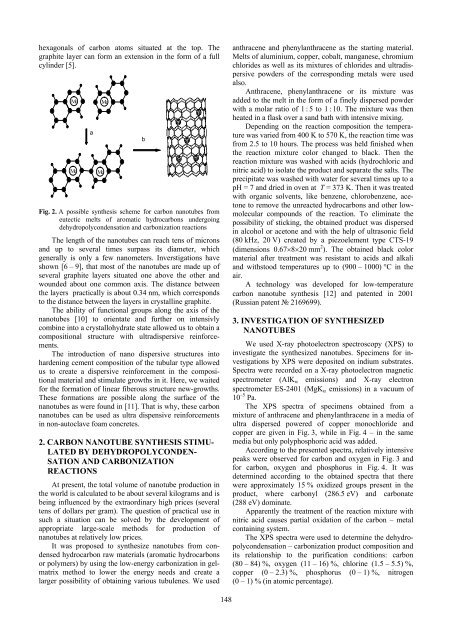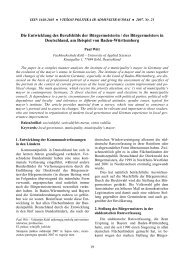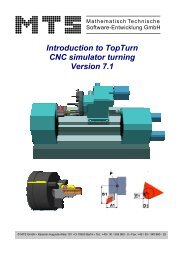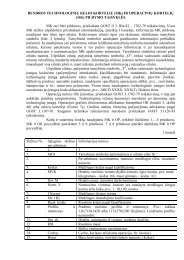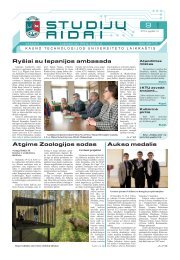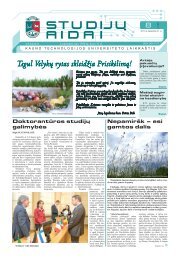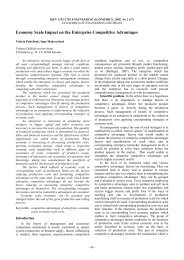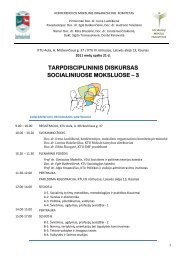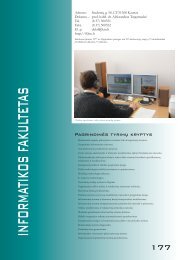cement based foam concrete reinforced by carbon nanotubes
cement based foam concrete reinforced by carbon nanotubes
cement based foam concrete reinforced by carbon nanotubes
You also want an ePaper? Increase the reach of your titles
YUMPU automatically turns print PDFs into web optimized ePapers that Google loves.
hexagonals of <strong>carbon</strong> atoms situated at the top. The<br />
graphite layer can form an extension in the form of a full<br />
cylinder [5].<br />
Me Me<br />
а<br />
Me Me<br />
Fig. 2. A possible synthesis scheme for <strong>carbon</strong> <strong>nanotubes</strong> from<br />
eutectic melts of aromatic hydro<strong>carbon</strong>s undergoing<br />
dehydropolycondensation and <strong>carbon</strong>ization reactions<br />
The length of the <strong>nanotubes</strong> can reach tens of microns<br />
and up to several times surpass its diameter, which<br />
generally is only a few nanometers. Inverstigations have<br />
shown [6 – 9], that most of the <strong>nanotubes</strong> are made up of<br />
several graphite layers situated one above the other and<br />
wounded about one common axis. The distance between<br />
the layers practically is about 0.34 nm, which corresponds<br />
to the distance between the layers in crystalline graphite.<br />
The ability of functional groups along the axis of the<br />
<strong>nanotubes</strong> [10] to orientate and further on intensivly<br />
combine into a crystallohydrate state allowed us to obtain a<br />
compositional structure with ultradispersive reinfor<strong>cement</strong>s.<br />
The introduction of nano dispersive structures into<br />
hardening <strong>cement</strong> composition of the tubular type allowed<br />
us to create a dispersive reinfor<strong>cement</strong> in the compositional<br />
material and stimulate growths in it. Here, we waited<br />
for the formation of linear fiberous structure new-growths.<br />
These formations are possible along the surface of the<br />
<strong>nanotubes</strong> as were found in [11]. That is why, these <strong>carbon</strong><br />
<strong>nanotubes</strong> can be used as ultra dispensive reinfor<strong>cement</strong>s<br />
in non-autoclave <strong>foam</strong> <strong>concrete</strong>s.<br />
2. CARBON NANOTUBE SYNTHESIS STIMU-<br />
LATED BY DEHYDROPOLYCONDEN-<br />
SATION AND CARBONIZATION<br />
REACTIONS<br />
At present, the total volume of nanotube production in<br />
the world is calculated to be about several kilograms and is<br />
being influenced <strong>by</strong> the extraordinary high prices (several<br />
tens of dollars per gram). The question of practical use in<br />
such a situation can be solved <strong>by</strong> the development of<br />
appropriate large-scale methods for production of<br />
<strong>nanotubes</strong> at relatively low prices.<br />
It was proposed to synthesize <strong>nanotubes</strong> from condensed<br />
hydro<strong>carbon</strong> raw materials (aromatic hydro<strong>carbon</strong>s<br />
or polymers) <strong>by</strong> using the low-energy <strong>carbon</strong>ization in gelmatrix<br />
method to lower the energy needs and create a<br />
larger possibility of obtaining various tubulenes. We used<br />
b<br />
148<br />
anthracene and phenylanthracene as the starting material.<br />
Melts of aluminium, copper, cobalt, manganese, chromium<br />
chlorides as well as its mixtures of chlorides and ultradispersive<br />
powders of the corresponding metals were used<br />
also.<br />
Anthracene, phenylanthracene or its mixture was<br />
added to the melt in the form of a finely dispersed powder<br />
with a molar ratio of 1 : 5 to 1 : 10. The mixture was then<br />
heated in a flask over a sand bath with intensive mixing.<br />
Depending on the reaction composition the temperature<br />
was varied from 400 K to 570 K, the reaction time was<br />
from 2.5 to 10 hours. The process was held finished when<br />
the reaction mixture color changed to black. Then the<br />
reaction mixture was washed with acids (hydrochloric and<br />
nitric acid) to isolate the product and separate the salts. The<br />
precipitate was washed with water for several times up to a<br />
pH = 7 and dried in oven at T = 373 K. Then it was treated<br />
with organic solvents, like benzene, chlorobenzene, acetone<br />
to remove the unreacted hydro<strong>carbon</strong>s and other low-<br />
molecular compounds of the reaction. To eliminate the<br />
possibility of sticking, the obtained product was dispersed<br />
in alcohol or acetone and with the help of ultrasonic field<br />
(80 kHz, 20 V) created <strong>by</strong> a piezoelement type CTS-19<br />
(dimensions 0.67×8×20 mm 2 ). The obtained black color<br />
material after treatment was resistant to acids and alkali<br />
and withstood temperatures up to (900 – 1000) °C in the<br />
air.<br />
A technology was developed for low-temperature<br />
<strong>carbon</strong> nanotube synthesis [12] and patented in 2001<br />
(Russian patent № 2169699).<br />
3. INVESTIGATION OF SYNTHESIZED<br />
NANOTUBES<br />
We used X-ray photoelectron spectroscopy (XPS) to<br />
investigate the synthesized <strong>nanotubes</strong>. Specimens for investigations<br />
<strong>by</strong> XPS were deposited on indium substrates.<br />
Spectra were recorded on a X-ray photoelectron magnetic<br />
spectrometer (AlKα emissions) and X-ray electron<br />
spectrometer ES-2401 (MgKα emissions) in a vacuum of<br />
10 –5 Pa.<br />
The XPS spectra of specimens obtained from a<br />
mixture of anthracene and phenylanthracene in a media of<br />
ultra dispersed powered of copper monochloride and<br />
copper are given in Fig. 3, while in Fig. 4 – in the same<br />
media but only polyphosphoric acid was added.<br />
According to the presented spectra, relatively intensive<br />
peaks were observed for <strong>carbon</strong> and oxygen in Fig. 3 and<br />
for <strong>carbon</strong>, oxygen and phosphorus in Fig. 4. It was<br />
determined according to the obtained spectra that there<br />
were approximately 15 % oxidized groups present in the<br />
product, where <strong>carbon</strong>yl (286.5 eV) and <strong>carbon</strong>ate<br />
(288 eV) dominate.<br />
Apparently the treatment of the reaction mixture with<br />
nitric acid causes partial oxidation of the <strong>carbon</strong> – metal<br />
containing system.<br />
The XPS spectra were used to determine the dehydropolycondensation<br />
– <strong>carbon</strong>ization product composition and<br />
its relationship to the purification conditions: <strong>carbon</strong><br />
(80 – 84) %, oxygen (11 – 16) %, chlorine (1.5 – 5.5) %,<br />
copper (0 – 2.3) %, phosphorus (0 – 1) %, nitrogen<br />
(0 – 1) % (in atomic percentage).


